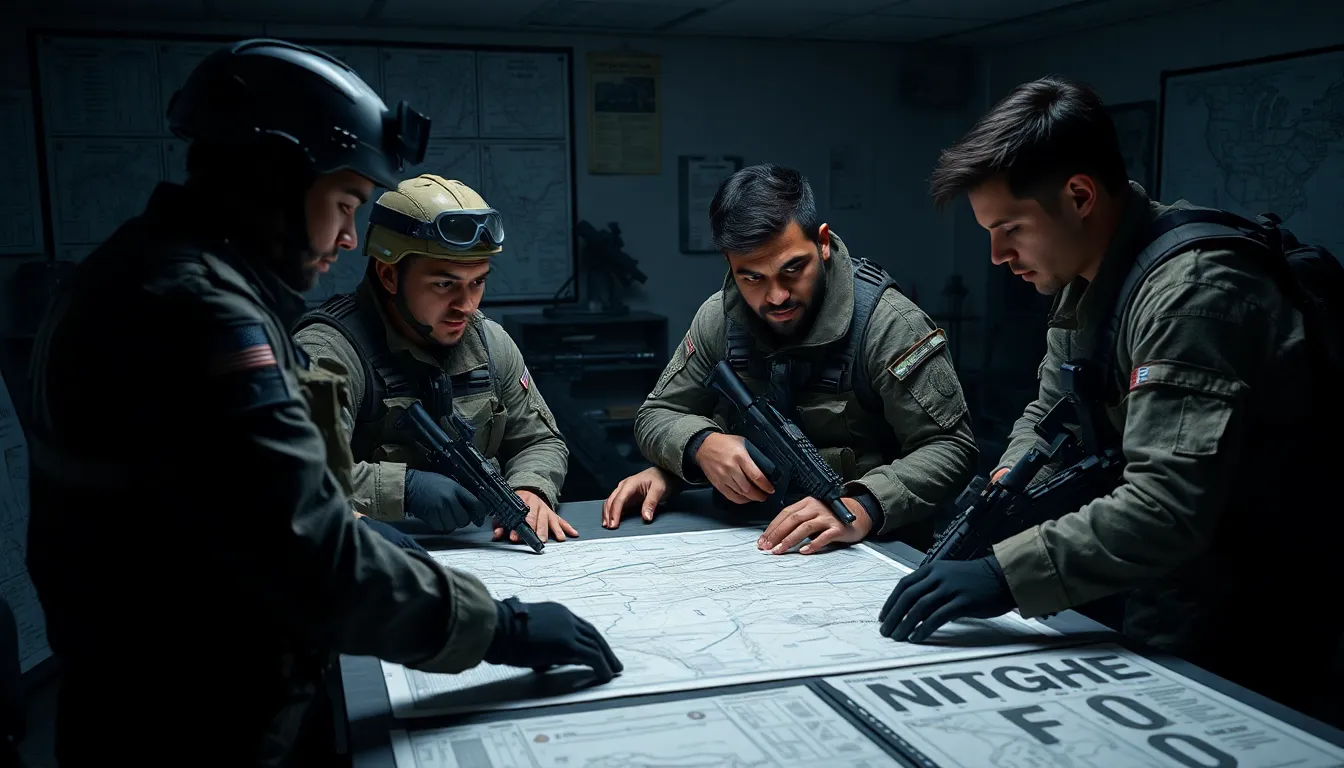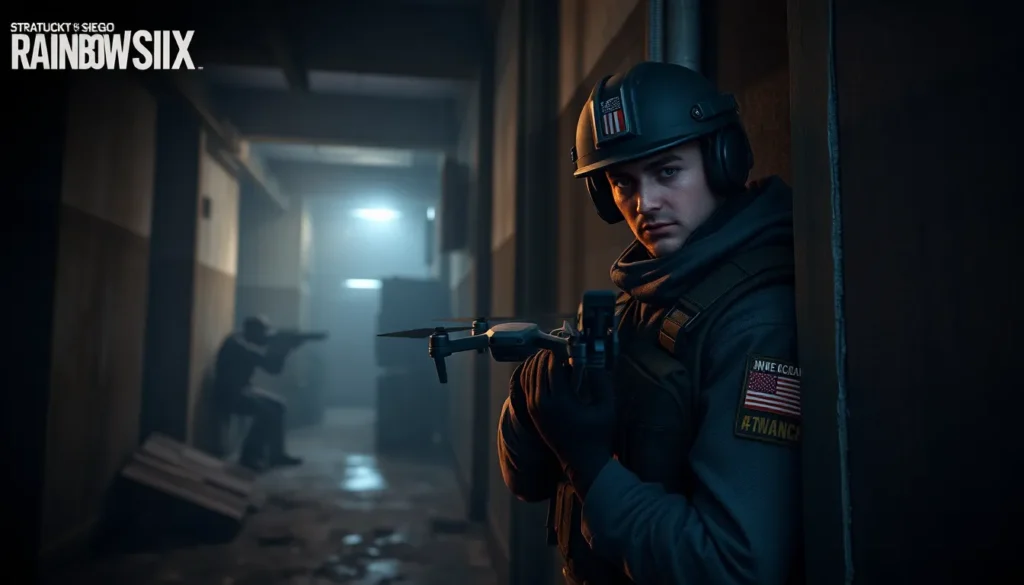Table of Contents
ToggleIn the world of Rainbow Six Siege, tactical gameplay isn’t just a strategy; it’s an art form. Players dive into a chaotic ballet of destruction and teamwork, where every move counts and every bullet could be the last. Forget running in guns blazing; it’s all about patience, planning, and a dash of cunning. Think of it as chess, but with drones and explosives—what’s not to love?
Overview of R6S Tactical Gameplay
Rainbow Six Siege emphasizes the importance of tactical gameplay. Understanding the map is essential for success. Players must recognize each operator’s strengths and weaknesses. Teamwork serves as the backbone of every successful operation. Cooperation frequently leads to more effective strategies and better outcomes.
Each match requires players to develop and adapt tactics based on the opposing team’s behavior. Proper communication between teammates ensures that strategies align with the game plan. Predicting enemy movements and reinforcing positions elevate a team’s performance. A focus on environmental destruction can create opportunities or deny enemy access to critical areas.
Operators come equipped with unique gadgets and abilities that can shape the flow of the game. Employing these tools wisely enhances overall effectiveness during engagements. Assessing when to be offensive or defensive makes a notable impact on victory.
Teams often leverage drone usage for reconnaissance before executing their plans. Gaining intel on enemy locations and setups provides a clear advantage. Coordinated execution of strategies maximizes impact during critical moments.
Victory in Rainbow Six Siege does not come from solo efforts but rather through collaboration and strategic thinking. Players who master tactical gameplay encourage their teams to thrive under pressure, making every round an intense and thrilling experience. Balancing aggression with caution fosters an atmosphere where risk can lead to reward.
Overall, tactical gameplay in R6S requires deep understanding, teamwork, and adaptability to succeed in each match.
Key Elements of Tactical Gameplay

Tactical gameplay in Rainbow Six Siege hinges on several key components essential for success. Players must master each aspect to effectively implement strategies during matches.
Operator Selection
Selecting the right operators boosts a team’s effectiveness. Each operator possesses unique gadgets and abilities tailored for specific roles. Healers enhance team survivability, while breachers facilitate access to fortified areas. Coordinating operator composition enhances versatility and counters opponent strategies. Picking a balanced mix of attackers and defenders maximizes potential during encounters and often influences match outcomes.
Map Knowledge
Understanding map layouts enriches gameplay experience. Detailed awareness of vantage points and entryways enhances strategic positioning. Knowledge of destructible surfaces allows players to create new sightlines and routes. Familiarity with common hiding spots helps anticipate enemy movements. Each map presents distinct challenges and advantages; knowing them leads to more informed decisions during engagements.
Communication and Teamwork
Effective communication underpins tactical gameplay. Sharing information about enemy locations and strategies fosters a cohesive team dynamic. Utilizing voice chat or in-game signals promotes quick decision-making. Teams that actively collaborate and adapt exhibit greater success under pressure. Establishing roles and responsibilities further enhances operational efficiency, allowing for synchronized attacks and defenses.
Strategies for Success
Tactical success in Rainbow Six Siege relies on well-planned offensive and defensive strategies. Each team member must understand their role and collaborate closely for optimal results.
Offensive Strategies
Identifying and exploiting weaknesses in enemy defenses proves crucial. Attackers benefit from careful drone reconnaissance, helping to gather intelligence on enemy positions and traps. Using breaching gadgets can create new entrances, surprising defenders and altering their line of sight. Combining abilities of operators enhances team effectiveness; for instance, deploying smoke or flashbangs before entry ensures cover. Executing a coordinated push maximizes firepower and draws enemy attention away from vulnerable teammates. Setting clear objectives, such as securing a bomb site or hostage, focuses efforts during the attack.
Defensive Strategies
Establishing strong defensive setups requires strategic placement of gadgets and reinforcements. Operators like Bandit or Jaeger can effectively counter breach attempts, providing additional layers of security. Communication remains vital; relaying enemy movements allows for quick adjustments in strategy. Utilizing drones for reconnaissance can identify potential threats and inform defensive shifts. Additionally, repositioning operators based on the enemy’s tactics helps maintain an adaptive defense. Prioritizing sightlines and creating kill zones minimizes attackers’ opportunities for success while enhancing team control over critical areas.
Common Mistakes to Avoid
Many players overlook the importance of teamwork. Prioritizing individual performance over team strategies often leads to missed opportunities for coordinated attacks. Rushing into engagements without communicating with teammates results in disarray and defeats the purpose of tactical gameplay.
Another common mistake is neglecting the map. Failing to understand map layouts and key locations leaves players vulnerable to ambushes and makes it difficult to utilize vantage points effectively. Utilizing drones can provide essential reconnaissance, but not using them appropriately misses vital information about enemy positions.
Some players misuse operators’ abilities. Each operator possesses unique gadgets and skills designed for specific situations. Misaligning these strengths with team needs can create gaps in both offense and defense, reducing overall effectiveness in the match.
Focusing on kills instead of objectives also leads to poor outcomes. Tactical gameplay requires players to recognize that winning hinges on achieving objectives. Chasing kills without strategic intent risks leaving team objectives unfulfilled, compromising chances for victory.
Additionally, many players fail to adapt their strategies mid-round. Sticking rigidly to a plan, even in the face of changing circumstances, hampers the ability to counteract enemy tactics. Flexibility enhances tactical gameplay, allowing teams to respond effectively to opposition maneuvers.
Ignoring communication is another significant error. Clear and consistent communication among team members ensures synchronized movements and decision-making. Teams that don’t vocalize their intentions often find themselves outmaneuvered and unable to regroup strategically.
Finally, players should avoid neglecting gadget placement. Thoughtlessly deploying gadgets in ineffective spots can reduce their impact during crucial moments. Placing gadgets strategically ensures maximum utility, reinforcing both defensive and offensive strategies.
Mastering tactical gameplay in Rainbow Six Siege is an ongoing journey that demands dedication and teamwork. By honing skills in communication and map awareness players can significantly enhance their performance. Each match presents a new opportunity to adapt strategies and learn from previous encounters.
Emphasizing collaboration over individual achievements fosters a stronger team dynamic. Players should remember that the blend of strategy and execution is what ultimately leads to victory. As they refine their approach to both offense and defense they’ll discover the thrill of tactical gameplay that makes Rainbow Six Siege a unique experience.




